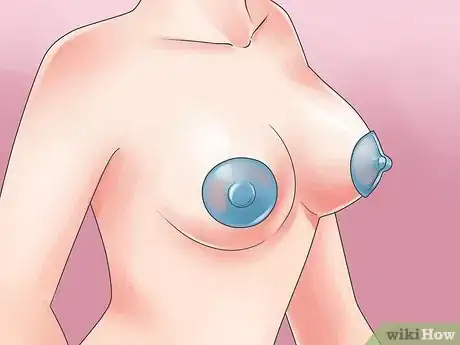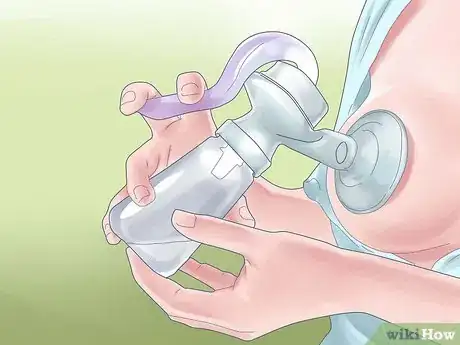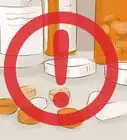This article was medically reviewed by Lacy Windham, MD. Lacy Windham, MD, is a Board-Certified Obstetrician & Gynecologist in Cleveland, Tennessee. Dr. Windham attended medical school at the University of Tennessee Health Science Center in Memphis. Her residency was completed at Eastern Virginia Medical School in Norfolk, Virginia. She was the recipient of multiple awards during her residency training, including Most Outstanding Resident in Maternal Fetal Medicine, Most Outstanding Resident in Oncology, Most Outstanding Resident Overall, and Special Award in Minimally Invasive Surgery.
There are 9 references cited in this article, which can be found at the bottom of the page.
This article has been viewed 279,306 times.
Breast milk is the best source of nutrition for your baby. It contains exactly what your baby needs for nutrients, energy, and antibodies against illnesses. Your body will prepare your breasts for breastfeeding without you having to do very much. However, there are a few things that you can do to learn what to expect and get organized.[1]
Steps
Getting Ready to Breastfeed
-
1Massage, but do not “rough up,” your breasts. Massaging your breasts will help you relax and prepare you in case you need to manually express milk for the baby.[2]
- The massage should be gentle and not painful. Start above the breast and stroke with a circular motion while moving towards the nipple.[3] Then move again to the outside of the breast in a different area and repeat, moving towards the nipple. Do this until you have moved around the entire breast.
- Do not “rough up” your nipples by scrubbing them roughly with a towel. This will remove the natural oils that your breast produces and may make them sore.
-
2Determine whether you have inverted nipples. Some women have inverted, or flat, nipples which appear to have an indentation in the middle. You can determine whether your nipples are inverted using the pinch test:[4] [5] [6]
- Pinch your breast between your thumb and forefinger on the areola, the dark area about an inch above and below the nipple.
- If your nipple becomes erect, it is not inverted. If it retracts into the breast, it is inverted. Women may have one inverted and one protruding nipple.
- The degree of inversion can vary from slight to severe.
- Your doctor will also be able to tell you whether your nipples are inverted or flat.
-
3Do not worry if you have inverted nipples. Many women with inverted nipples are able to successfully breastfeed without a problem. However, there are devices you can buy and techniques you can learn about to prepare in case your baby has trouble:[7]
- Push your nipples out with breast shells. Breast shells are plastic devices which press on your breast making the nipple pop out. You can prepare your breasts by wearing them before the birth and then after the birth for about 30 minutes before feeding time.
- Use the Hoffman Technique to stretch your nipple and make it easier to pop out. Put both thumbs on either side of your nipple and press into your breast while also spreading your thumbs apart. Work your way around the nipple. Start doing it twice a day and work up to five times per day. Continue doing it after birth.
- Use a breast pump to pull out your nipple right before feeding.
- Try an Evert-It Nipple Enhancer. This device uses suction to pull your nipple out.
- Stimulate your nipples to make them erect before feeding. Massage them between your thumb and forefinger until they protrude. You can also, very briefly, apply a cold compress, but do not numb it. This will make milk less likely to flow.
- As your baby latches on to drink, squeeze your breast or pull the skin back towards your chest. This will help the nipple protrude.
- Try a nipple shield in consultation with a lactation specialist. This is worn over the breast and allows milk to flow through a hole to the baby. If the baby has difficulty gripping the breast in its mouth, the shield may help. But do not use it without professional help to make sure it is done properly.
-
4Keep your breasts clean, but do not use harsh soaps. Washing your breasts in clear water will be sufficient to keep them clean.[8]
- Lotions and lubricants are not needed unless your nipples are very dry.
- If you have psoriasis or eczema, talk to your doctor about what medications you can use while breastfeeding.
- Wash your hands before breastfeeding or expressing milk.[9]
-
5Use a breast pump to induce lactation if you are an adoptive mother. Adoptive mothers can often breastfeed by stimulating their breasts to produce milk.[10]
- Stimulate your breasts through pumping every 2-3 hours around the clock before the baby comes.
- Use a Medela Supplemental Nursing System or a Lact-Aid Nurser Training System to feed your baby additional milk while he or she stimulates your body to increase its milk supply.
- The quantity of milk adoptive mothers can produce varies greatly. It may still be necessary to provide some formula.
Locating Additional Resources
-
1Talk to trusted friends and family members who have breastfed. They can provide you with advice and support.
- Breastfeeding difficulties are very common, so chances are you will know people who have had similar problems.
-
2Discuss breastfeeding with your doctor. Many maternity wards in hospitals and birthing clinics have staff available to assist new mothers.[11]
- Consult your doctor about any medications, herbal remedies, or supplements you may plan on taking while breastfeeding. Ask your doctor whether they are safe for your baby during breastfeeding.
- If you have had breast surgery or implants, ask your doctor whether it will likely impact your ability to breastfeed.
-
3Attend a course on how to breastfeed. You will be able to learn techniques for breastfeeding, including how to hold the baby to encourage it to latch on properly.[12]
- Most courses encourage partners to attend as well so they can learn what to do to be supportive.
- Ask the experts any questions you might have.
-
4Contact a lactation consultant. Even if your baby has not yet arrived, you can meet the consultant, discuss your concerns, and develop a trusting relationship.[13]
- If you need help learning to breastfeed, the expert may be able to come to your home and assist you.
-
5
Warnings
- Ask your doctor whether breastfeeding is right for you and your baby if you are on any medications, herbal remedies, or supplements. Some may not be safe for your baby if transmitted through breast milk.⧼thumbs_response⧽
- Consult your doctor before breastfeeding if you have HIV/AIDS or another disease that could be transmitted to your baby through breast milk.[16]⧼thumbs_response⧽
References
- ↑ http://www.nhs.uk/conditions/pregnancy-and-baby/pages/why-breastfeed.aspx#close
- ↑ https://www.llli.org/breastfeeding-info/preparing/
- ↑ https://www.llli.org/breastfeeding-info/engorgement/
- ↑ http://www.mayoclinic.org/diseases-conditions/mammary-duct-ectasia/multimedia/inverted-nipple/img-20007641
- ↑ https://www.llli.org/breastfeeding-info/preparing/
- ↑ https://www.llli.org/breastfeeding-info/inverted-flat-nipples/
- ↑ https://www.llli.org/breastfeeding-info/inverted-flat-nipples/
- ↑ https://www.llli.org/breastfeeding-info/preparing/
- ↑ http://www.cpmc.org/services/pregnancy/information/breastfeeding-FAQ.html
- ↑ https://www.llli.org/breastfeeding-info/adoption/
- ↑ http://womenshealth.gov/breastfeeding/learning-to-breastfeed.html
- ↑ http://womenshealth.gov/breastfeeding/learning-to-breastfeed.html
- ↑ http://womenshealth.gov/breastfeeding/learning-to-breastfeed.html
- ↑ http://womenshealth.gov/breastfeeding/learning-to-breastfeed.html
- ↑ https://www.llli.org/get-help/
- ↑ http://www.nhs.uk/conditions/pregnancy-and-baby/pages/why-breastfeed.aspx#close





































































